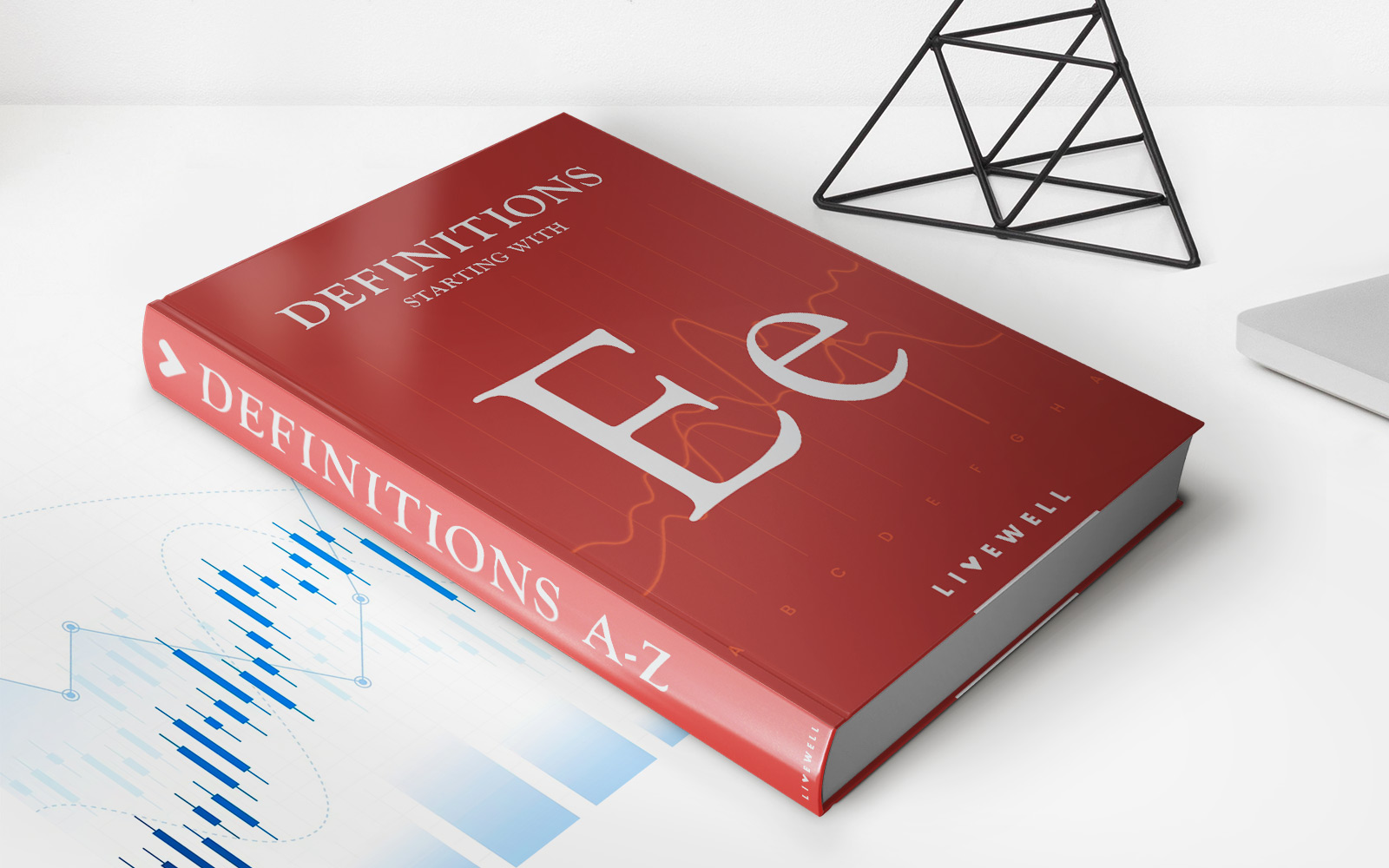

Finance
How Does Inflation Affect Retirement Planning
Published: January 22, 2024
Learn how inflation impacts your retirement plans and discover effective strategies for managing your finances in an ever-changing economic environment.
(Many of the links in this article redirect to a specific reviewed product. Your purchase of these products through affiliate links helps to generate commission for LiveWell, at no extra cost. Learn more)
Table of Contents
- Introduction
- Understanding Inflation
- The Impact of Inflation on Retirement Savings
- Adjusting Retirement Income for Inflation
- Strategies for Managing Inflation in Retirement Planning
- Considerations for Investment and Asset Allocation
- Social Security and Inflation
- Health Care Costs and Inflation
- Longevity Risk and Inflation
- Conclusion
Introduction
Retirement planning is a crucial aspect of financial management that requires careful consideration and foresight. One important factor that can have a significant impact on retirement savings is inflation. Inflation refers to the steady increase in prices of goods and services over time, which erodes the purchasing power of money. It is important for individuals to understand how inflation can affect retirement planning and take necessary steps to mitigate its impact.
In this article, we will explore the concept of inflation and its implications for retirement planning. We will discuss how inflation can erode the value of retirement savings, the importance of adjusting retirement income for inflation, and strategies for managing inflation in retirement planning. Additionally, we will delve into specific considerations such as the impact of inflation on Social Security benefits, healthcare costs, and longevity risk.
Understanding the impact of inflation on retirement planning is crucial for individuals to safeguard their financial well-being and maintain a comfortable lifestyle in their golden years. By being proactive and implementing effective strategies to combat inflation, individuals can mitigate the financial risks associated with rising prices and ensure a secure and sustainable retirement.
Understanding Inflation
Inflation is a fundamental economic concept that affects the purchasing power of money. It is characterized by a sustained increase in the general price level of goods and services over time. When inflation occurs, the value of money decreases, and it takes more money to purchase the same amount of goods or services.
There are several factors that contribute to the occurrence of inflation. One of the main drivers is the demand-pull effect, which happens when there is an increase in demand for goods and services that exceeds the available supply. This imbalance leads to price increases as businesses try to meet the higher demand. Another factor is the cost-push effect, where the increasing production costs, such as wages or raw materials, lead to higher prices for consumers.
Inflation is typically measured through various economic indicators, with the most commonly used being the Consumer Price Index (CPI). The CPI tracks the average change in prices that consumers pay for a basket of goods and services, representing the overall cost of living. Central banks, such as the Federal Reserve in the United States, closely monitor inflation rates and use monetary policy tools to manage and control inflation within a target range.
Understanding the impact of inflation is essential for retirement planning. Over time, inflation reduces the purchasing power of retirement savings, meaning that the same amount of money will buy fewer goods and services in the future. For example, assuming an average annual inflation rate of 3%, $100,000 today would have the purchasing power equivalent to $74,393 in 20 years.
Inflation erodes the value of both cash and fixed-income investments, such as bonds or certificates of deposit. However, certain assets, such as stocks and real estate, have the potential to provide returns that outpace inflation. Investing in these assets can help offset the negative impact of inflation on retirement savings.
It is important to note that inflation rates can vary over time and across countries. While moderate inflation is generally considered healthy for an economy, high inflation rates can erode savings and destabilize financial markets. Therefore, individuals planning for retirement should consider both short-term and long-term inflation trends and adjust their strategies accordingly.
The Impact of Inflation on Retirement Savings
Inflation can have a significant impact on retirement savings over time. Without proper planning and consideration for inflation, individuals may find that their retirement funds do not stretch as far as they had anticipated. Here are some key ways in which inflation can affect retirement savings:
- Reduced Purchasing Power: As prices of goods and services rise due to inflation, the purchasing power of retirement savings diminishes. This means that retirees may have to spend more money to maintain their desired standard of living, leaving less for other needs or activities.
- Long-Term Impact: Over the course of a typical retirement, which can span several decades, the cumulative effect of inflation can be significant. Even at relatively low annual inflation rates, the erosion of purchasing power can be substantial, potentially jeopardizing the retirement lifestyle individuals had envisioned.
- Increased Expenses: Inflation can lead to higher expenses in various areas of retirement life. Costs for everyday necessities such as food, housing, and healthcare tend to rise over time. Healthcare expenses, in particular, can be subject to inflation rates higher than the general consumer price index, making it a significant concern for retirees.
- Impact on Fixed-Income Investments: Retirees often rely on fixed-income investments, such as bonds or annuities, to provide a steady stream of income during retirement. However, the returns on these investments may not keep pace with inflation, resulting in a decrease in real purchasing power.
- Depletion of Savings: Inflation can force retirees to deplete their savings faster than anticipated. If expenses rise faster than the investment returns, the retirement nest egg may not last as long as planned, leading to financial stress and potentially requiring a decrease in the desired standard of living.
It is crucial for individuals to account for inflation when setting their retirement savings goals and designing their investment strategies. By considering the impact of inflation, individuals can make informed decisions about how much they need to save and how to allocate their assets to combat the erosive effects of rising prices.
In the next section, we will explore strategies for adjusting retirement income to incorporate inflation and discuss ways to manage inflation risk in retirement planning.
Adjusting Retirement Income for Inflation
When planning for retirement, it is vital to account for inflation and implement strategies to ensure that retirement income keeps pace with rising prices. Failing to do so can erode the purchasing power of retirement savings over time. Here are some strategies to consider for adjusting retirement income for inflation:
- Income Streams with Inflationary Adjustments: One effective approach is to incorporate income streams that have built-in inflation adjustments. For example, Social Security benefits in many countries are typically adjusted annually to account for inflation. By relying on such income sources, retirees can ensure that their income increases in line with rising prices.
- Investing in Inflation-Protected Securities: Inflation-protected securities, such as Treasury Inflation-Protected Securities (TIPS) in the United States, provide a reliable way to protect against inflation. These securities adjust their principal value based on changes in the Consumer Price Index, ensuring that the investor receives a real return that accounts for inflation.
- Systematic Withdrawal Strategies: Another approach is to utilize a systematic withdrawal strategy that takes inflation into account. These strategies involve withdrawing a percentage of the retirement portfolio each year while adjusting the withdrawal amount for inflation. This helps to maintain a consistent level of purchasing power throughout retirement.
- Diversification of Investment Portfolio: A well-diversified investment portfolio that includes assets with a potential for higher returns, such as stocks and real estate, can help combat the erosive effects of inflation. Historically, these assets have shown the ability to outpace inflation over the long term, providing a hedge against rising prices.
- Regular Review and Adjustment: It is crucial to regularly review and adjust retirement income strategies to keep up with changing economic conditions and inflation rates. As retirement progresses, reassessing the investment mix, withdrawal rates, and income sources can help ensure that the retirement income remains sufficient to sustain the desired lifestyle.
By implementing these strategies, retirees can protect their purchasing power and maintain a comfortable standard of living throughout their retirement years. It is important to consult with a financial advisor who can provide personalized guidance based on individual circumstances, investment goals, and risk tolerance.
In the upcoming sections, we will explore additional considerations related to managing inflation in retirement planning, including investment and asset allocation, the impact of inflation on Social Security benefits, healthcare costs, and longevity risk.
Strategies for Managing Inflation in Retirement Planning
Managing inflation is a critical aspect of retirement planning to ensure that retirees can maintain their desired standard of living and protect their purchasing power. Here are some strategies to consider:
- Start Saving Early and Regularly: The power of compounding can help individuals combat the effects of inflation. By starting to save for retirement early and consistently contributing to retirement accounts, individuals can potentially accumulate a larger nest egg that can better withstand the erosive impact of rising prices.
- Consider a Diverse Investment Portfolio: A well-diversified investment portfolio can provide a hedge against inflation. Including a mix of different asset classes, such as stocks, bonds, real estate, and commodities, can help mitigate the risk of declining purchasing power. Stocks, in particular, have historically shown the ability to outpace inflation over the long term.
- Review and Adjust Asset Allocation: As retirees approach and enter retirement, it is essential to review and adjust asset allocation to align with income needs and inflation risks. A balanced approach that incorporates a mix of conservative and growth-oriented investments can help provide income stability while still offering the potential for growth to counteract inflation.
- Consider Annuities: Annuities are financial products that provide a fixed stream of income for the rest of a retiree’s life. Certain types of annuities, such as inflation-indexed annuities, offer income adjustments based on inflation rates. This ensures that retirees receive a consistent income that keeps pace with rising prices.
- Stay Informed and Flexible: Economic conditions and inflation rates can change over time. Staying informed and adapting retirement plans as needed is crucial. Monitoring inflation trends, working with a financial advisor, and making adjustments to investment strategies and retirement income plans can help ensure that retirees are well-prepared in the face of changing inflation rates.
It is important to remember that there is no one-size-fits-all solution for managing inflation in retirement planning. Each individual’s financial situation and risk tolerance differ, and strategies should be tailored to meet specific needs and goals. Seeking guidance from a qualified financial advisor can provide valuable insights and help develop a personalized retirement plan that incorporates effective inflation management strategies.
In the following sections, we will explore specific considerations regarding investment and asset allocation, the impact of inflation on Social Security benefits, healthcare costs, and longevity risk in retirement planning.
Considerations for Investment and Asset Allocation
Investment and asset allocation play a crucial role in retirement planning, especially when it comes to managing inflation. Here are some key considerations to keep in mind:
- Inflation-Beating Investments: When planning for retirement, it is important to consider investments that have the potential to outpace inflation. Historically, assets such as stocks, real estate, and commodities have offered returns that can help protect against the erosive effects of rising prices. However, it’s essential to balance the potential for higher returns with the associated risks and match investment choices with personal risk tolerance and time horizon.
- Asset Diversification: Diversification is vital for managing risk and protecting against the volatility of individual investments. A well-diversified portfolio should include a mix of asset classes, such as stocks, bonds, and real estate, in different sectors and geographical regions. This can help provide stability and potential growth opportunities even in the face of inflationary pressures or market fluctuations.
- Inflation-Protected Securities: Inflation-protected securities, such as Treasury Inflation-Protected Securities (TIPS), are specifically designed to hedge against inflation. These bonds adjust their principal value based on changes in the Consumer Price Index, providing investors with a yield that keeps pace with rising prices. Consider including these securities in your investment portfolio to mitigate the impact of inflation.
- Regular Portfolio Rebalancing: It is important to regularly review and rebalance your investment portfolio to maintain the desired asset allocation. Market performance and inflation can cause asset classes to deviate from their target percentages over time. Rebalancing ensures that your portfolio remains aligned with your retirement goals and helps capture potential gains or manage risks associated with inflation.
- Consider Professional Guidance: Navigating the complexities of retirement planning and investment allocation can be challenging. Seeking guidance from a qualified financial advisor can provide valuable insight tailoring investment strategies to your specific needs and goals. An advisor can help you determine an appropriate asset allocation consistent with your risk tolerance and long-term objectives.
It is essential to periodically review your investment portfolio and adjust asset allocation as needed to align with changes in your retirement goals, time horizon, and inflation expectations. Regularly monitoring and adjusting your investment strategy can help ensure that your retirement savings retain their purchasing power and provide sufficient income to sustain your desired lifestyle throughout retirement.
Next, we will explore the impact of inflation on Social Security benefits and healthcare costs in retirement planning.
Social Security and Inflation
Social Security is an important source of retirement income for many individuals. Understanding how Social Security benefits are affected by inflation is crucial for effective retirement planning. Here are the key considerations regarding Social Security and inflation:
Cost of Living Adjustments (COLAs): To help retirees keep up with rising prices, Social Security benefits in many countries, including the United States, are subject to cost-of-living adjustments (COLAs). COLAs are intended to provide an increase in benefits to counteract the impact of inflation. The COLA is based on changes in the Consumer Price Index and is typically announced annually.
Protecting Purchasing Power: COLAs are designed to protect the purchasing power of Social Security benefits. By adjusting benefits for inflation, retirees can maintain their standard of living and have their retirement income keep pace with rising prices. This helps ensure that Social Security benefits retain their value in an environment of increasing costs.
Importance of COLAs: The annual COLA can have a significant impact on the retirement income of Social Security recipients. Without COLAs, the purchasing power of benefits would gradually erode over time, potentially leaving retirees financially vulnerable. Therefore, it is important for retirees to take into account COLAs when estimating their retirement income and incorporating Social Security benefits into their overall retirement plan.
Planning for COLAs: Since the annual COLA percentage is not guaranteed to be the same every year, it is important to account for potential variations when planning for retirement. By considering a range of COLA scenarios and estimating the potential impact on Social Security benefits, retirees can make more informed decisions about their retirement income needs and how to supplement their Social Security benefits with other income sources.
Maximizing Social Security Benefits: Retirees who delay claiming Social Security benefits beyond their full retirement age may receive higher monthly benefits. This can provide additional protection against inflation, as the higher benefit amount will be adjusted for COLAs. Delaying Social Security benefits can be a wise strategy to enhance retirement income and help preserve its purchasing power over the long term.
It is important to stay informed about changes to Social Security policies and COLA calculations. Keeping up with updates from the relevant government agencies or consulting with a financial advisor can help retirees make informed decisions about optimizing their Social Security benefits and incorporating them into their overall retirement plan.
Next, let’s explore the impact of inflation on healthcare costs in retirement planning.
Health Care Costs and Inflation
Health care costs are a significant consideration in retirement planning, and they are also subject to inflationary pressures. As individuals age, their health care needs often increase, making it essential to understand the potential impact of inflation on these costs. Here are some key points to consider:
Higher Inflation Rates: Health care costs tend to experience higher inflation rates compared to the general rate of inflation. This is due to various factors, including advances in medical technology, the rising cost of prescription drugs, and the increasing demand for health care services as the population ages. It is essential to account for these higher inflation rates when estimating health care expenses in retirement.
Long-Term Care Costs: Long-term care, such as nursing home care or in-home health care services, can be a significant expense in retirement. These costs tend to rise at a faster rate than general inflation, making it important to factor in potential increases when planning for long-term care needs.
Medicare Premiums and Coverage Changes: Medicare is the primary health insurance program for individuals aged 65 and older in the United States. However, it’s important to note that Medicare premiums and coverage can change over time, impacting retirees’ out-of-pocket expenses. Medicare premiums are adjusted annually and are subject to changes in health care costs and inflation. It is crucial for retirees to stay informed about these changes and budget accordingly.
Supplemental Health Insurance: Retirees may choose to purchase supplemental health insurance, such as Medigap policies or Medicare Advantage plans, to help cover health care costs not covered by Medicare. These plans often come with premiums, and the cost of coverage can increase over time due to inflation and rising health care expenses. It’s important to consider these potential cost increases and budget for them when planning for retirement.
Health Care Savings: Building an adequate health care savings cushion can help mitigate the impact of inflation on health care costs in retirement. Health savings accounts (HSAs) and other tax-advantaged savings vehicles can provide individuals with opportunities to save specifically for health care expenses. By regularly contributing to these accounts and investing the funds wisely, retirees can help ensure they have sufficient resources to cover medical costs and account for potential inflationary increases.
Longevity Risk: Inflation’s impact on health care costs can be compounded by longevity risk – the risk of living longer than expected. The longer retirees live, the more they are exposed to potential increases in health care expenses. Proper planning and accounting for potential increases in health care costs due to inflation can help ensure that retirees have the financial means to support themselves throughout their lifetime.
It is important for individuals to carefully consider health care costs and their potential inflationary impact when developing a comprehensive retirement plan. Consulting with a financial advisor and exploring insurance and savings options can help retirees better prepare for and manage the financial implications of health care inflation in retirement.
In the next section, we will discuss the impact of inflation on longevity risk in retirement planning.
Longevity Risk and Inflation
Longevity risk refers to the possibility of outliving one’s financial resources in retirement. Inflation plays a significant role in shaping this risk, as rising prices can erode the purchasing power of retirement savings over an extended retirement period. Understanding the impact of inflation on longevity risk is crucial for effective retirement planning. Here are some key points to consider:
Extended Retirement Period: With increased life expectancies, retirees are facing longer retirement periods. The longer retirees live, the more they are exposed to the erosive effects of inflation on their retirement savings. It is important to plan for a retirement that can span several decades and account for potential inflationary pressures during this extended period.
Reduced Future Income: Inflation can decrease the future value of retirement income streams, such as pensions or annuities, if they are not adjusted for rising prices. Retirees relying on fixed-income sources may find that the purchasing power of their income diminishes over time, making it vital to consider inflation-adjusted income options or implementing strategies to protect against inflation.
Inflation’s Cumulative Effect: Over time, the cumulative effect of inflation can be significant, gradually eroding the purchasing power of retirement savings. This can have a compounding effect on longevity risk as retirees spend more years in retirement and face the challenge of stretching their savings to cover their expenses.
Asset Allocation and Growth Potential: Investing in assets with growth potential, such as stocks and real estate, can help counteract the effects of inflation and mitigate longevity risk. Historically, these assets have demonstrated the ability to outpace inflation over the long term and provide a potential buffer against rising prices.
Flexibility and Adjustments: Given the uncertainties of inflation rates and investment returns, it is crucial for retirees to remain flexible and open to adjustments in their retirement plan. Regularly reviewing and reassessing the investment portfolio, retirement income strategies, and expense projections can help ensure that the retirement plan remains aligned with the changing economic landscape and inflationary pressures.
Professional Guidance and Planning: Longevity risk and inflation are complex factors that require careful consideration and analysis. Seeking guidance from a qualified financial advisor can provide valuable insights and help develop a comprehensive retirement plan that incorporates strategies to manage longevity risk, including protecting against inflation and maintaining purchasing power throughout retirement.
By understanding the impact of inflation on longevity risk and implementing appropriate strategies, retirees can enhance their financial security and reduce the likelihood of outliving their savings. It is crucial to be proactive, regularly review the retirement plan, and adapt as needed to ensure a comfortable and sustainable retirement lifestyle.
In the concluding section, we will recap the key insights discussed in this article and emphasize the importance of considering inflation in retirement planning.
Conclusion
Inflation is a vital consideration in retirement planning, as it can significantly impact the purchasing power and financial security of retirees. Failing to account for inflation can lead to a diminished standard of living and the potential risk of outliving one’s financial resources. By understanding the implications of inflation and implementing effective strategies, individuals can better protect their retirement savings and maintain their desired lifestyle throughout their golden years.
In this article, we explored the concept of inflation and how it affects retirement planning. We discussed the impact of inflation on retirement savings, the importance of adjusting retirement income for inflation, and strategies for managing inflation in retirement planning. It is crucial for individuals to start saving early, diversify their investment portfolio, and consider income sources with inflationary adjustments, such as Social Security benefits. Reviewing and adjusting asset allocation, considering healthcare costs, and accounting for longevity risk are also key factors in managing inflation effectively.
Planning for retirement requires a comprehensive approach that encompasses various financial considerations, and inflation is a crucial piece of the puzzle. By taking inflation into account, individuals can plan appropriately, allocate assets effectively, and adjust their retirement income strategies to ensure the preservation of purchasing power. Seeking guidance from a qualified financial advisor can provide additional support and insights tailored to individual circumstances.
Ultimately, considering inflation in retirement planning is essential for maintaining financial stability, protecting against rising costs, and achieving a comfortable and secure retirement. By staying informed, being proactive, and implementing effective strategies, individuals can navigate the challenges of inflation and enjoy a financially resilient and fulfilling retirement.














